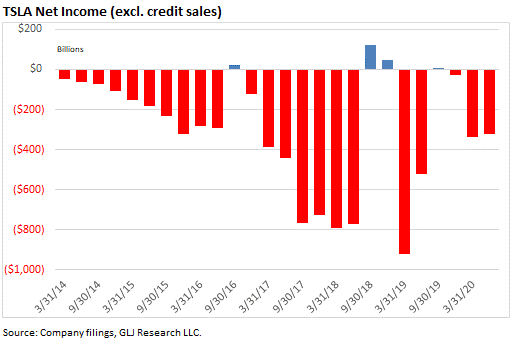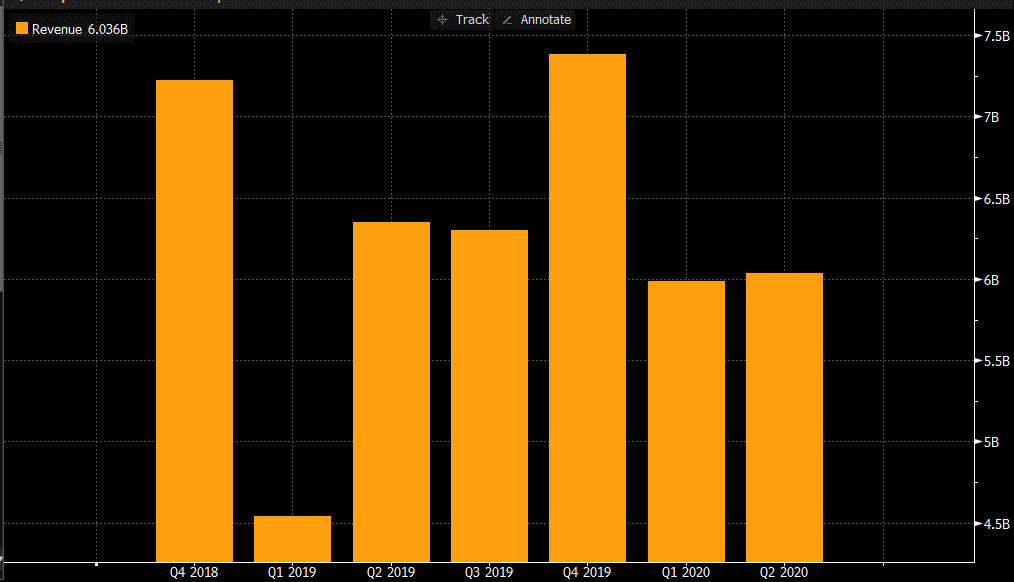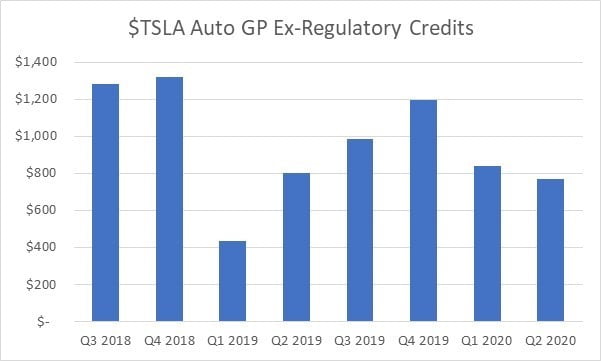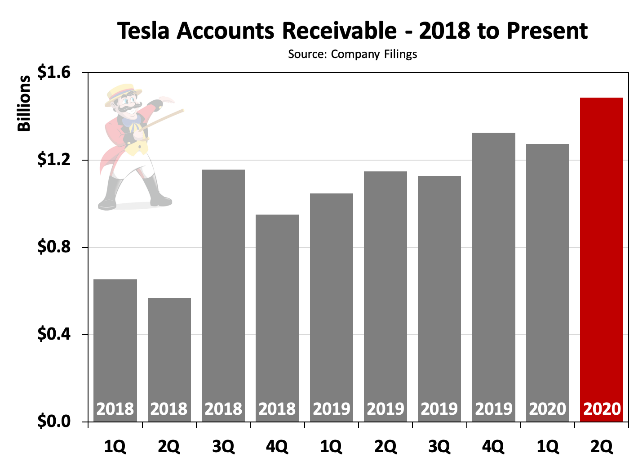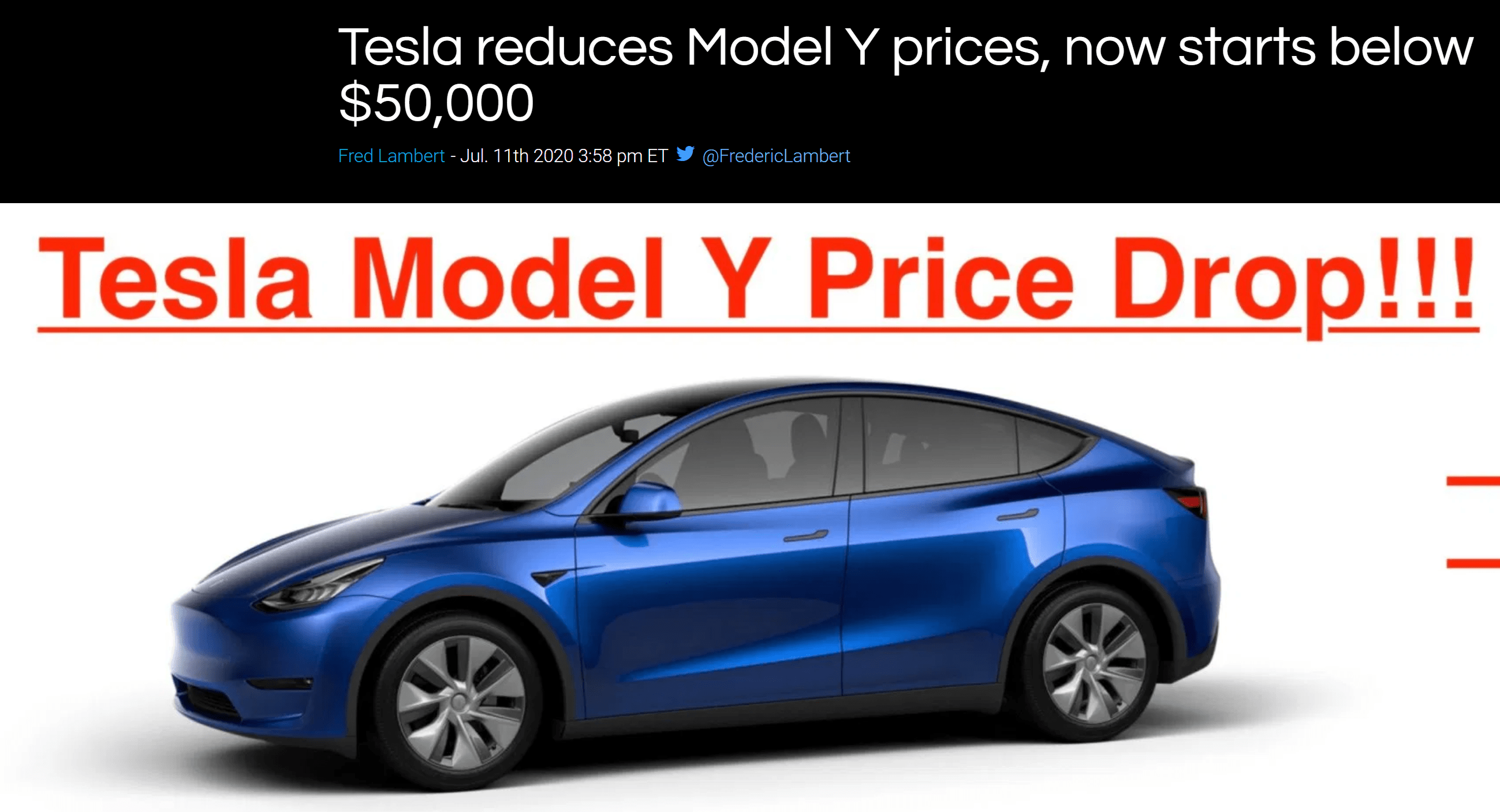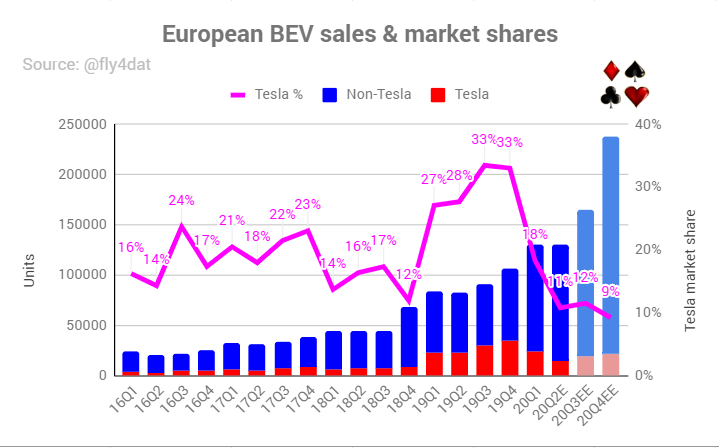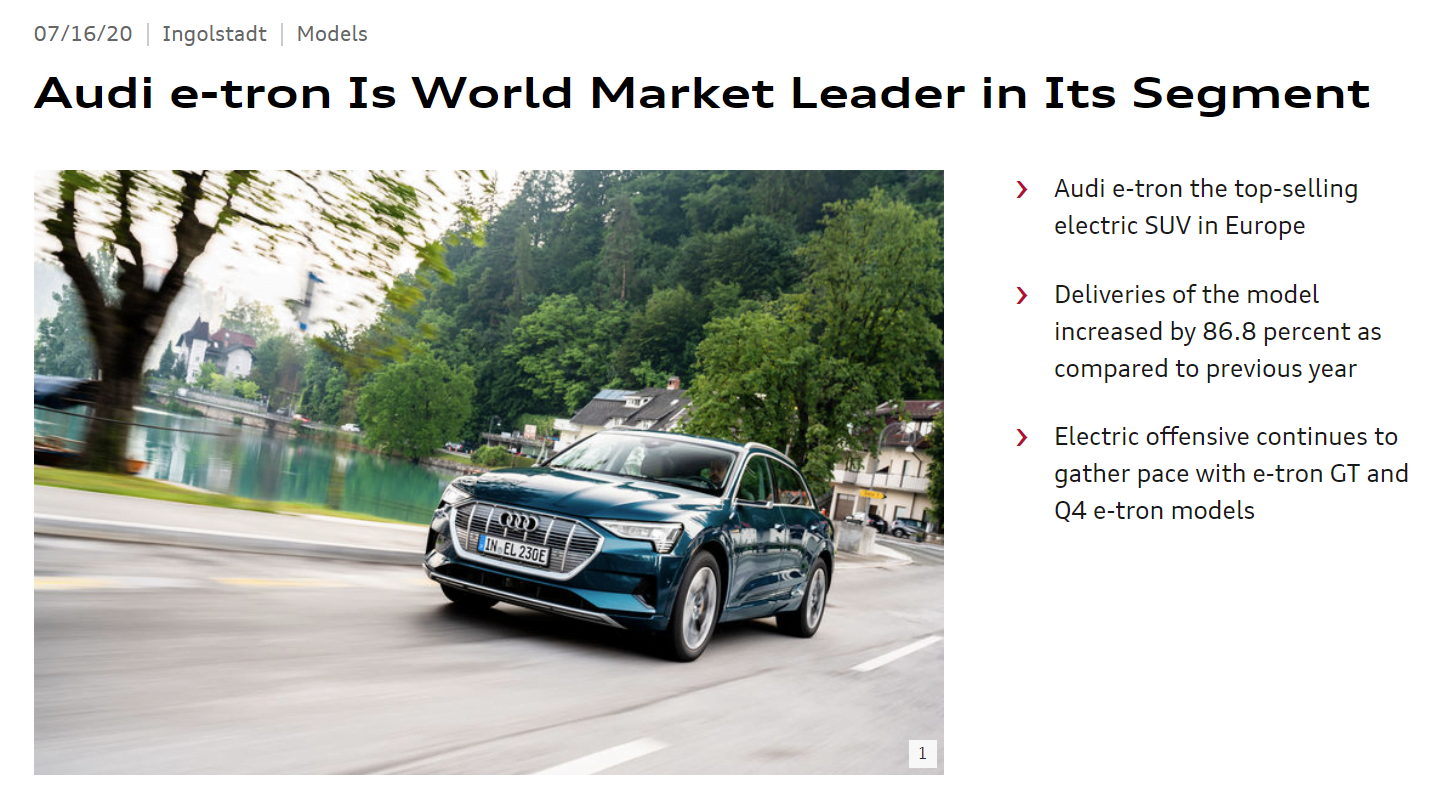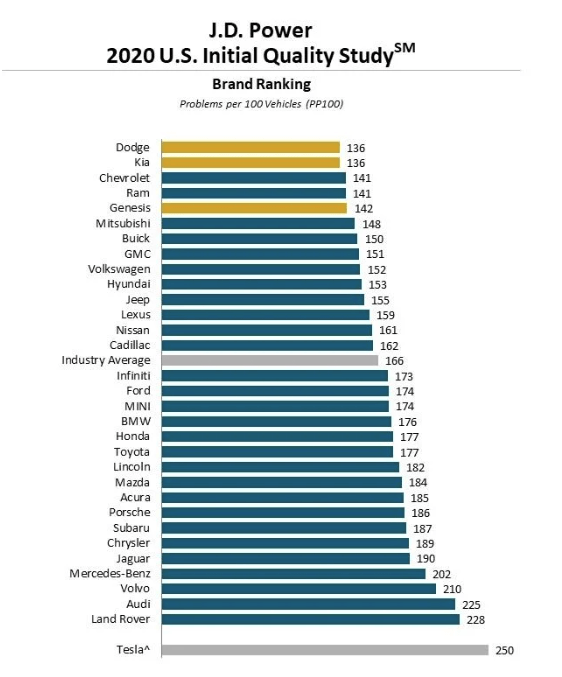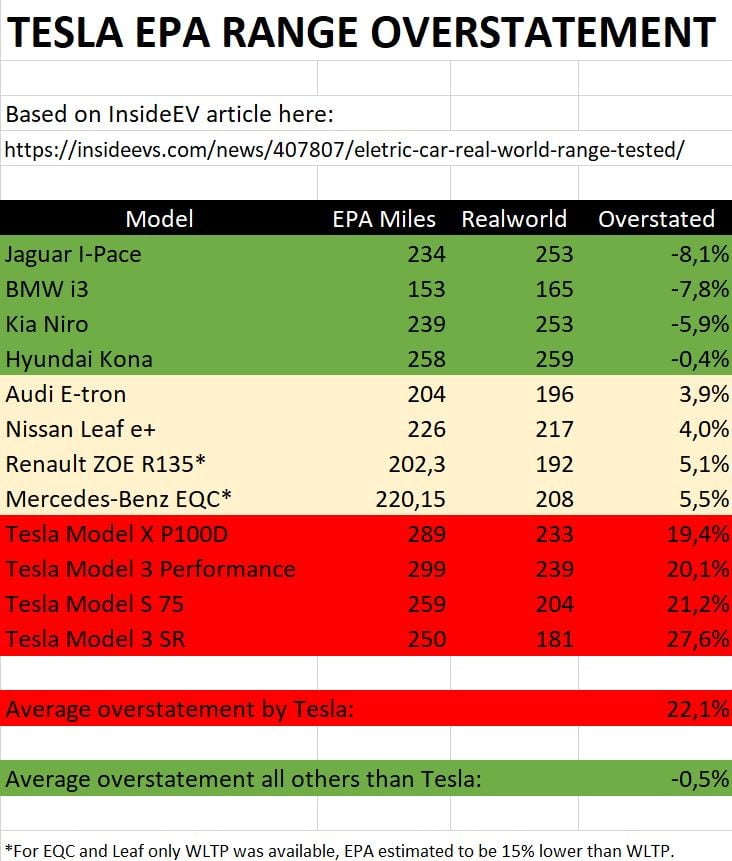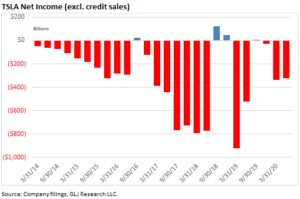
Stanphyl Capital letter to investors for the month ended August 2020, discussing Tesla’s stock split, vicious competitive landscape in China, and how it is a busted growth story.
Q2 2020 hedge fund letters, conferences and more
We’ve carried a Tesla Inc (NASDAQ:TSLA) short position that averaged only around 1/5th the size of the QQQ short (i.e., approximately 10% to 15% of the fund), but year-to-date Tesla (the biggest bubble in modern stock market history) is up an astounding 495% (to a fully diluted market cap of approximately $515 billion vs. $523 billion for Toyota, VW, GM, Daimler, BMW, Ford, Fiat-Chrysler, Honda and Nissan combined), and that hurt us significantly. So our short positions have obliterated the profits from our long positions, and yet when this bubble pops we’ll be glad we have them.
As mentioned at the beginning of this letter, we remain short Tesla Inc. (TSLA), which—with a diluted market cap of approximately $515 billion vs. $523 billion for Toyota, VW, GM, Daimler, BMW, Ford, Fiat-Chrysler, Honda and Nissan combined—is the biggest stock bubble in modern history. The core points of our Tesla short thesis are:
- Tesla has no “moat” of any kind; i.e., nothing meaningfully proprietary in terms of electric car technology, while existing automakers – unlike Tesla – have a decades-long “experience moat” of knowing how to mass-produce, distribute and service high-quality cars consistently and profitably, as well as the ability to subsidize losses on electric cars with profits from their conventional cars.
- Excluding sunsetting emission credit sales, in 2020 Tesla will again lose money, as it has every year in its 17-year existence.
- Tesla is now a “busted growth story”; average quarterly revenue has been roughly flat since Q4 2018, while unit demand for its cars is only being maintained via massive price cutting.
- Elon Musk is a securities fraud-committing pathological liar.
Tesla’s Stock Split
After being up 229% year-to-date through August 11th despite a core business that’s going nowhere, Tesla announced a 5-for-1 stock split and – and no other meaningful news whatsoever – is now up 495% year-to-date, adding $230 billion of market cap purely on the announcement of the stock split. Need I say more about what an insane bubble this stock is? Okay, I’ll say more…
In July Tesla reported Q2 net income of $104 million, which was laughably deceptive as it included $428 million of pure-profit emission credit sales, a revenue stream that will be drastically reduced later this year and disappear completely some time in 2021 when other manufacturers have enough EVs of their own. Excluding that, Tesla lost $324 million, and that’s before accounting for its fraudulently low warranty reserve. As for other blatant examples of nonsensical or unsustainable accounting, @WallStCynic points out: “D&A was down (!) Y/Y, despite a new factory coming online. SG&A + R&D was also down Y/Y.” Here are some great charts summarizing the quarter, beginning with one from GLJ Research showing Tesla’s awful record of quarterly net income excluding emission credit sales:
Next, @Keubiko wrote on Twitter: “Last 7 Qs of revenue. At some point you have to actually grow.”
From @fundiescapital, here’s Tesla’s automotive gross profit excluding regulatory credits:
From @TeslaCharts: “Accounts receivable growing while revenue is shrinking for a company that demands payment before delivery. Nothing to see here.”
Additionally, Q2’s automotive delivery number was only achievable via a large increase in Chinese sales filling short-term demand spurred by massive 2020 price cuts, but China’s EV competitive landscape is now getting vicious, and in August we learned that Tesla’s July sales were down considerably from those in June, and the price war there is just getting started. Meanwhile Tesla’s Q2 worldwide sales excluding China were down over 30%. And oh, for perspective: in Q2 Tesla sold approximately 30,000 cars in China; GM sold 713,000.
And for those of you looking for a resumption of growth from Tesla’s Model Y, demand for that car is so poor that Tesla is already slashing its price:
Competition Will Get Tougher For Tesla
This is unsurprising, as its quality is awful, and later this year and in 2021 it will face superior competition from the much nicer electric Audi Q4 e-tron and Q4 e-tron Sportback, BMW iX3 (in Europe & China), Mercedes EQB, Volvo XC40, Volkswagen ID.4 and Nissan Ariya, while less expensive and available now are the excellent all-electric Hyundai Kona and Kia Niro, extremely well reviewed small crossovers with an EPA range of 258 miles for the Hyundai and 238 miles for the Kia, at prices of under $30,000 inclusive of the $7500 U.S. tax credit. Meanwhile, the Model 3 now has terrific direct “sedan competition” from Volvo’s beautiful new Polestar 2 and the premium version of Volkswagen’s ID.3, and next year from the BMW i4.
And oh, the joke of a “pickup truck” Tesla previewed last year won’t be any kind of “growth engine” either, especially as if it’s ever built it will enter a dogfight of a market.
Nothing’s more amusing than seeing this giant stock promotion of a company continue to add capacity (expanding its Chinese factory while supposedly breaking ground on new factories in Texas and Germany) in order to desperately try to maintain an image of “limitless demand” as it continually slashes prices to unprofitable levels (excluding unsustainable emission credit sales and accounting fraud) just to utilize far less than its existing capacity.
And for those who still think “Tesla is years ahead of the competition,” the most competitive EV region in the world is Europe, and Tesla’s EV market share there has now declined from over 30% to a year-end estimate of single digits. Courtesy of Twitter user @fly4dat, here’s a great graph showing that:
And in the high-end segment worldwide, the Audi eTron now outsells either of Tesla’s offerings (the Model S and the Model X)…
Lawsuits Against Tesla
Meanwhile, in July Tesla was hit with a well-documented sudden acceleration class action lawsuit, and in May it was revealed that for years it deliberately sold cars that it knew were a fire hazard. And of course Tesla continues to sell and promote its hugely dangerous so-called “Autopilot” system; God only knows how many more people this monstrosity unleashed on public roads will kill, despite February’s NTSB hearing condemning it as dangerous. Indeed, when it comes to the safety of customers and innocent bystanders, Tesla is truly one of the most vile companies on Earth, while its initial quality is ranked dead last among 31 brands J.D. Power surveyed:
And here’s a great graphic from @clausMller17 showing Tesla’s blatantly fraudulent range claims:
Meanwhile, Tesla has the most executive departures I’ve ever seen from any company; here’s the astounding full list of escapees. These people aren’t leaving because things are going great (or even passably) at Tesla; rather, they’re likely leaving because Musk is either an outright crook or the world’s biggest jerk to work for (or both). And in January Aaron Greenspan of @PlainSite published a terrific treatise on the long history of Tesla fraud; please read it!
Consumer Reports has completely eviscerated the safety of Tesla’s so-called “Autopilot” system; in fact, Teslas have far more pro rata (i.e., relative to the number sold) deadly incidents than other comparable new luxury cars; here’s a link to those that have been made public. Meanwhile Consumer Report’s annual auto reliability survey ranks Tesla 23rd out of 30 brands (and that’s with many stockholder/owners undoubtedly underreporting their problems—the real number is almost certainly much worse), and the number of lawsuits of all types against the company continues to escalate– there are now over 800 including one proving blatant fraud by Musk in the SolarCity buyout (if you want to be really entertained, read his deposition!).
So here is Tesla’s competition in cars…
(note: these links are regularly updated)
- Porsche Taycan
- Porsche Taycan Cross Turismo
- Porsche Macan EV to get Taycan platform and tech
- Audi e-tron: Electric Has Gone Audi
2020 Audi E-Tron Sportback debuts slick new roofline, a bit more range - AUDI E-TRON GT FIRST DRIVE: LOOK OUT, TESLA (available 2020)
- 2021 Audi Q4 e-tron Will Be the Cheapest Electric Audi
- Audi adding Sportback version of 2021 Q4 e-tron
- Audi TT set to morph into all-electric crossover
- Jaguar i-Pace
- Jaguar Land Rover to invest £1bn in three new UK-built EVs
- Mercedes EQC electric SUV available now in Europe & China and in 2021 in the U.S.
- Mercedes-Benz Launches the EQV, its First Fully-Electric Passenger Van
- Mercedes EQA electric SUV previewed in exclusive images
- Mercedes EQB Small SUV to boost brand’s electric line-up
- Mercedes EQS will be built in addition to the S-Class on a new dedicated electric platform
- Volvo Polestar 2 Arrives 2020
- Polestar 3 will be an electric SUV that shares its all-new platform with next Volvo XC90
- Volvo XC40 Recharge, a 408-HP Electric SUV comes in 2020
- Volvo confirms electric version of next XC90
- Volkswagen ID.3 Deliveries Begin September 2020
- VW ID.4: Wolfsburg’s Upcoming EV Crossover
- VW Group’s first hot compact EV to be launched by Cupra brand
- VW Group to launch 70 pure electric cars over the next decade
- GM Will Have Twelve Electric Vehicles Soon
- Hyundai Kona Electric: 258-mile range & under $38,000 before subsidies
- Hyundai set to turn Ioniq name into a global EV brand
- Genesis Electric Luxury SUV Coming in 2022
- Kia Niro Electric: 239-mile range & $39,000 before subsidies
- Kia Soul Electric: 243-mile range
- New 2021 electric Kia SUV to offer Porsche Taycan pace with 0-62mph in 3s
- All-Electric Ford Mustang Mach-E Delivers Power, Style and Freedom for New Generation
- FstockThe Electric Ford F-150 Will Be Here by Mid-2022
- Ford to build two European EVs based on VW’s MEB platform
- Nissan vows to hop back on EV podium with Ariya
- Nissan LEAF e+ with 226-mile range is available now
- BMW leads off EV offensive with iX3
- Electric BMW iX1 SUV set for production
- The BMW i4 EV Will Be the Most Powerful 4-Series
- BMW iX (iNEXT) electric SUV comes in 2021 in three flavors, from 300 to 600 HP
- Rivian electric pickup truck- funded by Amazon, Ford, Cox & others- is on the way
- Renault upgrades Zoe electric car as competition intensifies
- New all-electric Renault SUV to arrive in next 18 months
- Peugeot 208 to electrify Europe’s small-car market
- Peugeot to offer EV version of new 2008 small crossover
- Electric Mini Arrives 2020
- Toyota and Subaru Agree to Jointly Develop BEV-dedicated Platform and BEV SUV
- Mazda extends MX name to new MX-30 electric crossover
- Opel sees electric Corsa as key EV entry
- 2021 Vauxhall Mokka revealed as EV with sharp looks, massive changes
- Škoda electric Enyaq to come in 5 variants
- New Citroen C4 Cactus to be first electrified Citroen in 2020
- FCA to invest $788M to build new 500 EV in Italy
- BYD will launch electric SUV in Europe
- The Lucid Air Achieves an Estimated EPA Range of 517 Miles on a Single Charge
- Maserati to launch electric sports car
- Bentley Will Offer Hybrid Versions of Every Car It Makes and Add an EV by 2025
- Lucid Motors closes $1 billion deal with Saudi Arabia to fund electric car production
- Meet the Canoo, a Subscription-Only EV Pod Coming in 2021
- Two new electric cars from Mahindra in India; Global Tesla rival e-car soon
- Former Saab factory gets new life building solar-powered Sono Sion electric cars
And in China…
- VW ramps up China electric car factories, taking aim at Tesla
- Volkswagen pumps 2 billion euros into China electric vehicle bet
- Audi Q2L e-tron debuts at Auto Shanghai
- Audi will build Q4 e-tron in China
- FAW-Volkswagen’s Foshan plant said to produce e-tron Sportback
- FAW Hongqi starts selling electric SUV with 400km range for $32,000
- FAW (Hongqi) to roll out 15 electric models by 2025
- China’s BYD launches six new electrified vehicles
- Top of Form
- Bottom of Form
- Daimler & BYD launch new DENZA electric vehicle for the Chinese market
- Geely, Mercedes-Benz launch $780 million JV to make electric smart-branded cars
- Mercedes styled Denza X 7-seat electric SUV to hit market
- Mercedes ‘makes mark’ with China-built EQC
- Daimler and BMW to cooperate on affordable electric car in China
- BMW, Great Wall to build new China plant for electric cars
- BAIC Goes Electric, & Establishes Itself as a Force in China’s New Energy Vehicle Future
- BAIC BJEV, Magna ready to pour RMB2 bln in all-electric PV manufacturing JV
- Toyota, BYD will jointly develop electric vehicles for China
- Lexus to launch EV in China taking on VW and Tesla
- GAC Toyota to ramp up annual capacity by 400,000 NEVs
- GAC Aion
- GAC NIO kicks off delivery of HYCAN 007 all-electric SUV
- Chevrolet Menlo Electric Vehicle Launched in China
- Buick Launches VELITE 6 PLUS MAV Electric Vehicle in China
- Buick Velite 7 EV And Velite 6 PHEV Launch In China
- General Motors’ Chinese Venture to Sink $4.3 Billion Into Electric Vehicles by 2024
- Nissan & Dongfeng to invest $9.5 billion in China to boost electric vehicles
- Dongfeng’s premium EV-focused “VOYAH” unveiled as independent brand
- PSA to accelerate rollout of electrified vehicles in China
- Fiat Chrysler, Foxconn Team Up for Electric Vehicles
- Hyundai Motor Transforming Chongqing Factory into Electric Vehicle Plant
- Polestar said to plan China showroom expansion to compete with Tesla
- Nio
- Jaguar Land Rover’s Chinese arm invests £800m in EV production
- Renault reveals series urban e-SUV K-ZE for China
- Renault & Brilliance detail electric van lineup for China
- Renault forms China electric vehicle venture with JMCG
- Honda Debuts New Everus VE-1 All-Electric SUV, But Only For China
- Honda to roll out over 20 electric models in China by 2025
- Geely launches new electric car brand ‘Geometry’ – will launch 10 EVs by 2025
- Mazda to roll out China-only electric vehicles by 2020
- Xpeng Motors sells multiple EV models
- Changan New Energy
- WM Motors/Weltmeister
- Chery
- Seres
- Enovate
- Evergrande Hengchi
- China’s cute Ora R1 electric hatch offers a huge range for less than US$9,000
- Singulato
- JAC Motors releases new product planning, including many NEVs
- Seat to make purely electric cars with JAC VW in China
- Iconiq Motors
- Hozon
- Aiways
- NEVS launches electric-car output with Saab 9-3 platform in China
- Youxia
- CHJ Automotive begins to accept orders of Leading Ideal ONE
- Infiniti to launch Chinese-built EV in 2022
- Zotye Auto to roll out 10 plus NEV models by 2020
- Skywell makes inroads into China’s NEV domain
- Thunder Power
- Leapmotor
- Continental, Didi sign deal on developing EVs for China
- Human Horizons
- Mine Mobility (Thailand)
Here’s Tesla’s competition in autonomous driving…
- Consumer Reports finds Tesla’s Navigate on Autopilot is far less competent than a human driver
- Navigant Ranks Tesla Last Among Automakers & Suppliers for Automated Driving
- Tesla has a self-driving strategy other companies abandoned years ago
- Fiat Chrysler, Waymo expand self-driving partnership for passenger, delivery vehicles
- Waymo and Lyft partner to scale self-driving robotaxi service in Phoenix
- Volvo, Waymo partner to build self-driving vehicles
- Jaguar and Waymo announce an electric, fully autonomous car
- Renault, Nissan partner with Waymo for self-driving vehicles
- Voyage Partners with FCA to Deliver Fully Driverless Cars
- Hyundai and Kia Invest in Aurora
- Aptiv and Hyundai Motor Group complete formation of autonomous driving joint venture
- Cadillac Super Cruise™ Sets the Standard for Hands-Free Highway Driving
- Honda Joins with Cruise and General Motors to Build New Autonomous Vehicle
- SoftBank Vision Fund to Invest $2.25 Billion in GM Cruise
- Ford’s electric Mustang will offer hands-free driving technology in 2021
- Ford-VW alliance with Argo could redraw self-driving sector
- VW taps Baidu’s Apollo platform to develop self-driving cars in China
- Amazon Buys Driverless Startup Zoox, Cites Ride-Hailing Goal
- Nvidia and Mercedes Team Up to Make Next-Gen Vehicles
- Daimler’s heavy trucks start self-driving some of the way
- SoftBank, Toyota’s self-driving car venture adds Mazda, Suzuki, Subaru Corp, Isuzu Daihatsu
- Continental & NVIDIA Partner to Enable Production of Artificial Intelligence Self-Driving Cars
- Mobileye & multiple OEMs
- Nissan gives Japan version of Infiniti Q50 hands-free highway driving
- Hyundai to start autonomous ride-sharing service in Calif.
- Uber unveils next-generation Volvo self-driving car
- Pony.ai raises $462 million in Toyota-led funding
- Baidu kicks off trial operation of Apollo robotaxi in Changsha
- Toyota to join Baidu’s open-source self-driving platform
- Baidu, WM Motor announce strategic partnership for L3, L4 autonomous driving solutions
- Baidu plans to mass produce Level 4 self-driving cars with BAIC by 2021
- DiDi completes over $500M fundraising round for its autonomous driving subsidiary
- Geely selects Volvo, Veoneer joint venture as autonomous tech supplier
- BMW and Tencent to develop self-driving car technology together
- BMW, NavInfo bolster partnership in HD map service for autonomous cars in China
- FAW Hongqi readies electric SUV offering Level 4 autonomous driving
- Tencent, Changan Auto Announce Autonomous-Vehicle Joint Venture
- Huawei steps up ambitions in self-driving vehicles race
- BYD partners with Huawei for autonomous driving
- Lyft, Magna in Deal to Develop Hardware, Software for Self-Driving Cars
- Deutsche Post to Deploy Test Fleet Of Fully Autonomous Delivery Trucks
- ZF autonomous EV venture names first customer
- Magna’s new MAX4 self-driving platform offers autonomy up to Level 4
- Groupe PSA’s safe and intuitive autonomous car tested by the general public
- Mitsubishi Electric to Exhibit Autonomous-driving Technologies in New xAUTO Test Vehicle
- Apple acquires self-driving startup Drive.ai
- Momenta – Building Autonomous Driving Brains
- JD.com Delivers on Self-Driving Electric Trucks
- NAVYA Unveils First Fully Autonomous Taxi
- Fujitsu and HERE to partner on advanced mobility services and autonomous driving
- Lucid Chooses Mobileye as Partner for Autonomous Vehicle Technology
- Nuro’s Robot Delivery Vans Are Arriving Before Self-Driving Cars
Here’s where Tesla’s competition will get its battery cells…
- Panasonic (making deals with multiple automakers)
- LG
- Samsung
- SK Innovation
- Toshiba
- CATL
- BYD
- Northvolt (backed by VW & BMW)
- Ultium (General Motors & LG joint venture)
- UK companies AMTE Power and Britishvolt plan $4.9 billion investment in battery plants
- Verkor
- Farasis
- Microvast
- Akasol
- Cenat
- Wanxiang
- Eve Energy
- Svolt
- Saft
- Romeo Power
- Solid-state batteries on track at Toyota
- ProLogium Technology Will Produce First Next Generation Lithium Ceramic Battery For EVs
- BMW invests in Solid Power solid-state batteries
- Ford invests in Solid Power solid-state batteries
- Hyundai Motor developing solid-state EV batteries
Most car makers will use those battery cells to manufacture their own packs. Here are some examples:
- Daimler starts building electric car batteries in Tuscaloosa – one of 8 battery factories
- GM picks Lordstown site for $2.3 billion battery plant
- GM inaugurates battery assembly plant in Shanghai
- PSA to assemble batteries for hybrid, electric cars in Slovakia
- Honda Partners on General Motors’ Next Gen Battery Development
- France’s Saft plans production of next-gen lithium ion batteries from 2020
- Sokon aims to be global provider of battery, electric motor, electric control systems
- BMW Group invests 200 million euros in Battery Cell Competence Centre
- BMW Brilliance Automotive opens battery factory in Shenyang
- Rimac is going to mass produce batteries and electric motors for OEMs
Here’s Tesla’s competition in charging networks…
- Electrify America is spending $2 billion building a high-speed U.S. charging network
- GM, EVgo partner to expand U.S. charging network
- 191 U.S. Porsche dealers are installing 350kw chargers
- ChargePoint to equip Daimler dealers with electric car chargers
- GM and Bechtel plan to build thousands of electric car charging stations across the US
- Ford introduces 12,000 station charging network, teams with Amazon on home installation
- Petro-Canada Introduces Coast-to-Coast Canadian Charging Network
- Volta is rolling out a free charging network
- Ionity has over 150 European 350kw charging stations
- E.ON and Virta launch one of the largest intelligent EV charging networks in Europe
- Volkswagen plans 36,000 charging points for electric cars throughout Europe
- Smatric has over 400 charging points in Austria
- Allego has hundreds of chargers in Europe
- PodPoint UK charging stations
- BP Chargemaster/Polar is building stations across the UK
- Instavolt is rolling out a UK charging network
- Fastned building 150kw-350kw chargers in Europe
- Aral To Install Over 100 Ultra-Fast Chargers In Germany
- Deutsche Telekom launches installation of charging network for e-cars
- Shell starts rollout of ultrafast electric car chargers in Europe
- Total to build 1,000 high-powered charging points at 300 European service-stations
- Volkswagen, FAW Group, JAC Motors, Star Charge formally announce new EV charging JV
- BP, Didi Jump on Electric-Vehicle Charging Bandwagon
- Evie rolls out ultrafast charging network in Australia
- Evie Networks To Install 42 Ultra-Fast Charging Sites In Australia
And here’s Tesla’s competition in storage batteries…
- Panasonic
- Samsung
- LG
- BYD
- AES + Siemens (Fluence)
- GE
- Bosch
- Mitsubishi Hitachi
- Toshiba
- ABB
- Saft
- Johnson Contols
- EnerSys
- SOLARWATT
- Schneider Electric
- Sonnen
- Kyocera
- Generac
- Kokam
- NantEnergy
- Eaton
- Nissan
- Tesvolt
- Kreisel
- Leclanche
- Lockheed Martin
- EOS Energy Storage
- ESS
- UET
- electrIQ Power
- Belectric
- Stem
- ENGIE
- Redflow
- Renault
- Primus Power
- Simpliphi Power
- redT Energy Storage
- Murata
- Bluestorage
- Adara
- Blue Planet
- Tabuchi Electric
- Aggreko
- Orison
- Moixa
- Powin Energy
- Nidec
- Powervault
- Schmid
- 24M
- Ecoult
- Innolith
- LithiumWerks
- Natron Energy
- Energy Vault
- Ambri
- Voltstorage
Thanks and stay healthy,
Mark Spiegel
The post “Tesla lost $324 million [In Q2], and that’s before accounting for its fraudulently low warranty reserve”: Shortseller appeared first on ValueWalk.

